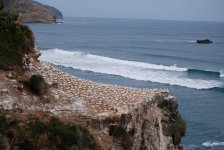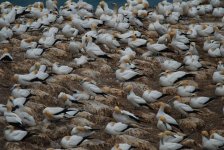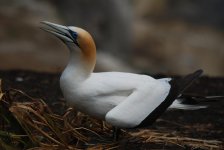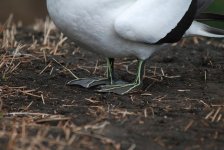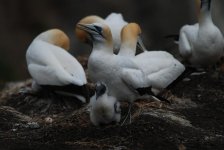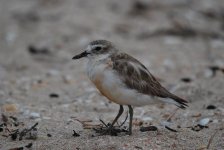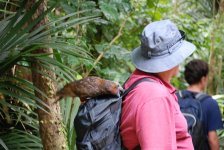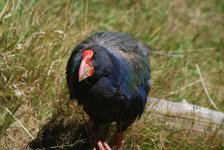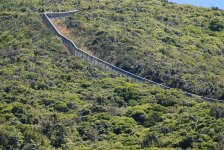Maroon Jay
Airborne

I went to Tiritiri Matangi Island. The ferry goes at 9 a.m. and arrives at the island about 10:30. I met up with a couple of other birders and we took a guided tour of the island. Unfortunately it was a dark, overcast day. Most days start out that way but then it clears up and is nice and sunny by 9 a.m. After the tour and lunch, we had less than two hours to tour around on our own before having to return to the ferry for the ride back to Auckland. The sky finally cleared up and the sun came out at about 2 p.m. I saw lots of birds and it was a good day but not enough time and too dark in the forest due to the gloomy overcast sky. It was a good introduction to the island but I think a serious birder or bird photographer will want to make a second trip or better yet stay overnight for more time and to see the nocturnal kiwis. It is possible to rent a bed in a bunkhouse style building.
I saw the following new birds: NZ Fantail, NZ Robin, North Island Saddleback, NZ Pigeon, Stitchback (female only which is grey with white shoulders. Did not see the male which is black, yellow and white), NZ Bellbird, Brown Quail, and Whitehead.
I did not see the rare birds including the Takahe and the Kokako. The Takahe are in hiding at this time because they have chicks. They are more likely to be seen anytime other than December.
I hope to get back to the island again when I return to Auckland after my tour of the North and South Islands.
I saw the following new birds: NZ Fantail, NZ Robin, North Island Saddleback, NZ Pigeon, Stitchback (female only which is grey with white shoulders. Did not see the male which is black, yellow and white), NZ Bellbird, Brown Quail, and Whitehead.
I did not see the rare birds including the Takahe and the Kokako. The Takahe are in hiding at this time because they have chicks. They are more likely to be seen anytime other than December.
I hope to get back to the island again when I return to Auckland after my tour of the North and South Islands.




